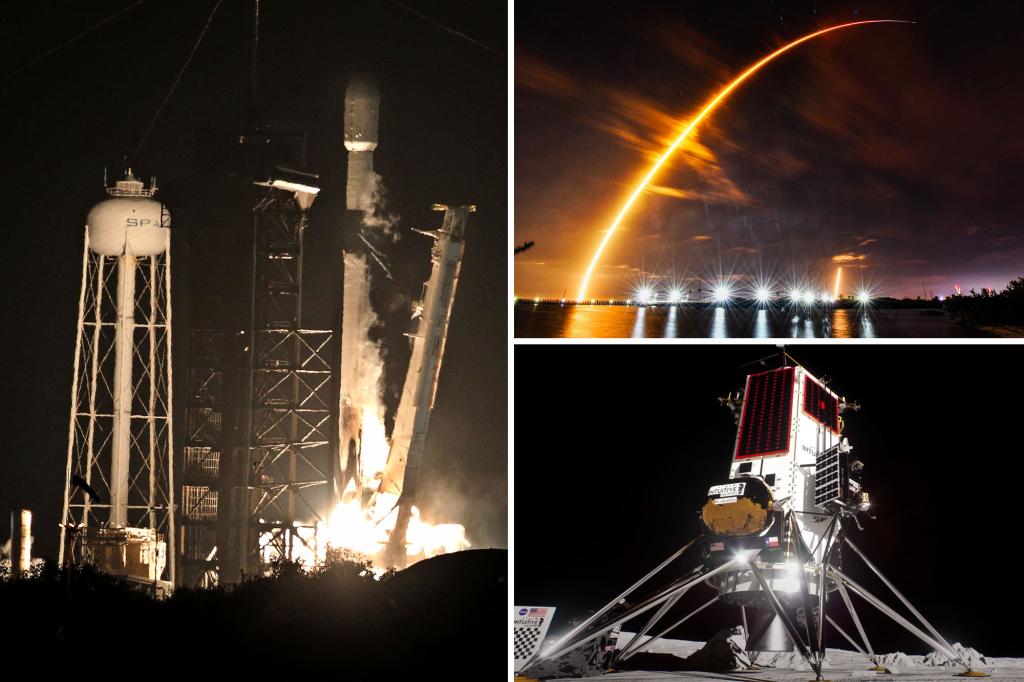Intuitive Machines, the Texas company that returned America to the Moon last year, aims to make a repeat appearance, this time delivering the first cell service to the lunar surface in addition to helping find resources.
With two separate private lunar missions on the way right now, Intuitive Machines will become the third en route with the launch of its Nova-C lander, named Athena, to the Moon on Wednesday.
The Houston-based company made history last year when its first Nova-C lander touched down on the Moon, marking the first U.S. landing since Apollo 17 in 1972 and the first private lunar arrival.
SpaceX and Intuitive Machines are targeting liftoff from NASA’s Kennedy Space Center in Florida at 7:16 p.m. ET.
NASA is among the customers with payloads on Athena but is also launching a ride-sharing mission on the SpaceX rocket, known as Lunar Trailblazer, a spacecraft that will map water ice on the Moon.
NASA will begin live launch coverage at 6:30 p.m. ET.
Weather conditions for liftoff are more than 95% favorable, according to forecasters with the U.S. Space Force.
The IM-2 mission is part of NASA’s Commercial Lunar Payload Services (CLPS) program and contains science investigations for NASA, along with Lonestar Data Holdings, Columbia Sportswear, Nokia, Lunar Outpost, Puli Space, Dymon Co. Ltd. and the German Aerospace Center.
Athena will mark the fourth CLPS mission to launch in as many years, and another with Astrobotic will launch later this year.
Athena will be the first mission to test mining resources on the Moon.
It will use a drill to collect and examine lunar soil for organic materials.
4G network on the moon?
If Intuitive Machines sticks another landing, it will help test the first cellular network on the Moon.
Nokia’s Bell Labs’s Lunar Surface Communication System (LSCS) is a “network in a box” designed to operate on the lunar South Pole.
Two Moon vehicles will be deployed to test the 4G network: Intuitive Machines’ Micro-Nova Hopper named “Grace” and Lunar Outpost’s Mobile Autonomous Prospecting Platform (MAPP) rover.
Both vehicles will use the LSCS to communicate with Athena on the Moon, even when Grace descends into the permanently shadowed craters of the Moon.
Nokia and Intuitive Machines hope to transmit photos and video, potentially of the first image of ice on the Moon, back to Athena through the lunar cellular network.
When NASA’s Artemis astronauts land on the Moon in the next few years, their spacesuits will use similar Nokia cellular technology.
Wednesday’s launch sets up the U.S. for two lunar landings in under a week.
On Sunday, Firefly Aerospace’s Blue Ghost lander is scheduled to land on the near-side of the Moon.
Four days later, Intuitive Machine’s Athena will come in for landing on the lunar South Pole.
Read the full article here

